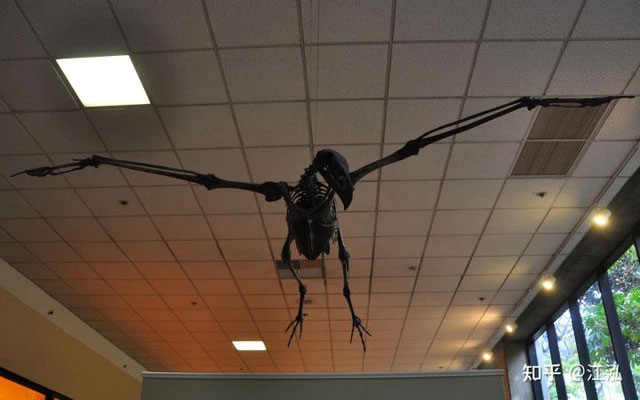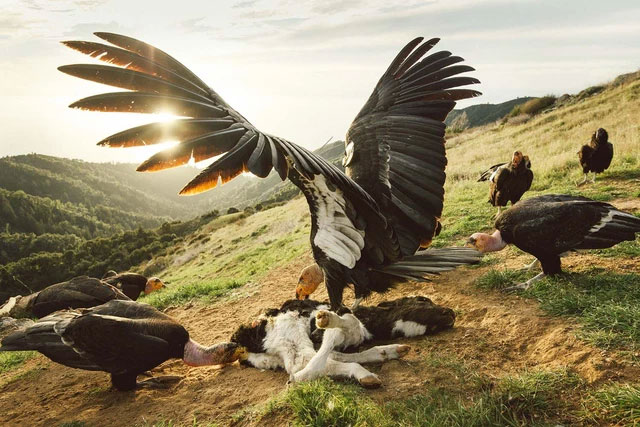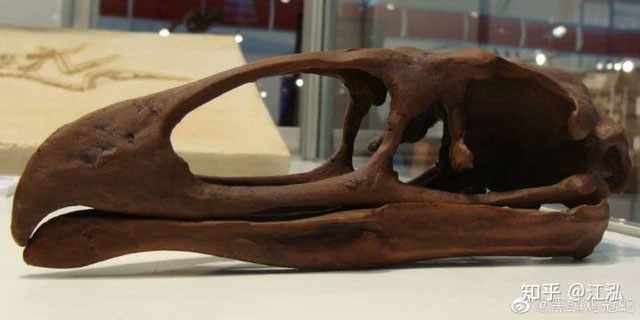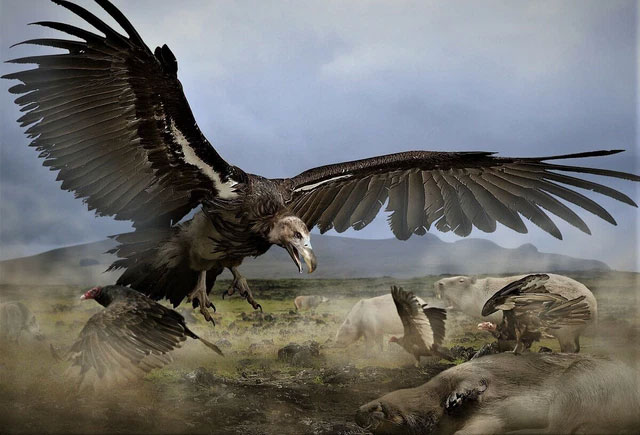A massive sinkhole unexpectedly appeared in downtown Los Angeles, swallowing numerous buildings and residents; in reality, it is a sinkhole that allows time travel to the past. This is the plot of the American television series La Brea (2021), which premiered on NBC on September 28, 2021. What attracted me most about this series is not the storyline itself, but rather the various ancient creatures that appear within it. The first creature encountered is not a saber-toothed tiger, but a giant scavenging bird.
La Brea (The Primordial Land) is an American drama television series that premiered on NBC, with its first episode released on September 28, 2021. The show is produced and run by David Appelbaum.
The story revolves around a gigantic sinkhole that opens up in Los Angeles, causing hundreds of people, vehicles, and buildings to fall into it. The survivors find themselves trapped in a primordial land dating back approximately 10,000 years BC. As life was proceeding peacefully, the appearance of the sinkhole separates a family of four, with the father desperately trying to rescue his wife and son from the hole, but is denied permission by the U.S. Department of Homeland Security.
Below the sinkhole, in order to survive, a group of strangers, each harboring secrets they wish to keep hidden, band together to support each other, taking turns to guard and search for food. The animals of the late Ice Age soon appear: saber-toothed tigers, giant ground sloths, which pose a significant threat to their first unique survival experience.
Over a century ago, while paleontologists were excavating fossils in the La Brea Tar Pits, paleontologist Loye H. Miller accidentally discovered the fossil of an unknown giant bird species. Later, in 1909, he named this giant bird Teratornis.

Loye Holmes Miller was an American paleontologist and zoologist, who served as a professor of zoology at the University of California, Los Angeles, the University of California, Berkeley, and the University of California, Davis.

The Teratornis fossil found in the La Brea Tar Pits. They belong to a genus of giant predatory birds in North America.
This bird is considered “giant” because it is indeed very large, with wingspans reaching up to 4 meters. When standing on two legs, it reaches about 80 cm in height and weighs over 15 kg. Hearing these numbers, many might think they are not that impressive, but the largest bird currently on Earth – the wandering albatross (*Diomedea exulans*) – cannot compare to the Teratornis in size. The largest known individuals of the wandering albatross have wingspans of about 3.5 meters, so it is not an exaggeration to say that this unusual bird is a “giant bird.”
The closest living relative to the Teratornis is the California condor (*Gymnogyps californianus*), also known as the California vulture. It is currently the largest bird in North America, with a wingspan of up to 3 meters.

The California condor is a bird belonging to the vulture family. Once widespread in mountainous areas of the western United States, it is the largest modern bird in North America. This species inhabits northern Arizona, southern Utah, the coastal mountain ranges of central and southern California, and northern Baja California.
The Teratornis had a large head, a hard, hooked beak well-suited for tearing flesh, similar to modern carnivorous birds. Due to its unusually large head, it could swallow a rabbit in one bite. The Teratornis not only had a powerful mouth but also very useful eyesight, capable of spotting targets on the ground from great heights.

The skull of Teratornis.
These birds had little to no feathers on their heads and necks, similar to vultures, which is a characteristic of scavenger birds. Their wings were broad, and their hind limbs were very strong. Paleontologists have discovered that despite their large bodies, these birds could jump and take off directly from their feet, unlike other large birds that require a run-up to take flight.
When fully spread, the wings of adult Teratornis could cover an area of up to 17.5 square meters, allowing them to soar effortlessly through the air.

Teratornis birds existed over 2 million years ago, and their fossils have been found in many locations across the United States, including California, Oregon, Nevada, Arizona, and Florida. Among these, the La Brea Tar Pits are considered the site with the most discoveries, exceeding one hundred.
Why was there a giant bird like the Teratornis in North America? The answer lies in the presence of a large number of giant mammals in North America, such as mammoths, mastodons, and giant bison, whose carcasses became a tasty meal for the Teratornis. This bird likely had a lifestyle similar to that of modern African vultures on the African savanna; upon discovering a large animal carcass, it would gather a flock to drive away other scavengers before feasting on the foul-smelling meat.
The Teratornis relied on large animals for survival, and as these large animals disappeared, they too would gradually vanish due to a lack of food. Over 10,000 years ago, with changes in climate and human impact, most large mammals in North America went extinct, which led to the extinction of this bird; thus, the extinction of the Teratornis is relatively recent in the grand timeline of history.
- When the land became too boring, this “monster” began to learn from the ancestors of whales and went to live in the sea
- A giant sea monster 17 meters long reveals secrets of “miraculous evolution”
- A bizarre creature with a sheep-like face and human-like eyes vanished soon after being domesticated by humans


















































